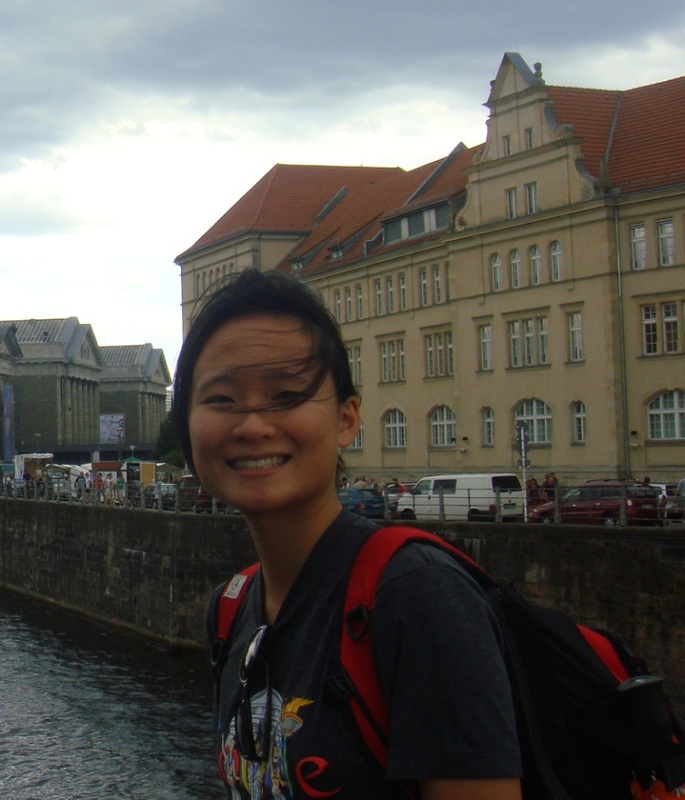Week 6: Simple yet complexby Pin-Wen Wang I think that out of everything I’ve learned, the concept of photoluminescence is probably the single most important fundamental (but not complex) concept that I needed to understand to help me with my research. When you break up the word photoluminescence, it’s just “photo” and “luminescence”. Luminescence is the phenomenon of a material giving off light. “Photo” refers to photons or packets of energy that, in physics, quantifies the energy that creates light. What photoluminescence of a material refers to, then, is a material’s ability to give off light by giving off these packets of energy. A very similar concept is bioluminescence, which can be likened to the way a firefly gives off light, by biological/chemical processes within its body. For my research, I needed to count how many photons were given off by “my” nanoparticle materials when I agitate the material with a laser, giving the material energy. The number of photons that are given off though isn’t constant, nor does it follow a well defined curve. That’s where my research comes in. When I was charged with the task of characterizing nanoparticles, I struggled to understand why I was doing it. I didn’t know what type of experiments to design because I didn’t know what I wanted to see, simply because I didn’t know. We didn’t know how the nanoparticles would react or what they would do. I understood photoluminescence, but I didn’t understand the point of my research. Many times when I ask my supervisor questions about what I should be doing, he answers “if I knew the answers, we wouldn’t be doing the research”. Through doing my research, I finally understand a whole new perspective of scientific research. It’s not really about understanding a complex concept that you only read about in textbooks. Textbooks provide you with stories, histories of what past researchers have concluded. With my nanoparticles, learning how to use the apparatus and coding programs was not difficult. The most difficult part was trying to understand the graphs I was getting and explaining why these graphs behaved the way they do, and knowing some background information about the properties of metals and ways electrons behave in different materials. Understanding what photoluminescence is was a great jumping off point to start the journey of trying to understand something like nanoparticles. About the Blogger
3 Comments
12/19/2012 02:01:20 am
We are currently working on a college paper and we have been exploring your blog for a few hours. Thank you for your post it proved helpful for us.
Reply
12/21/2012 06:59:29 am
I am currently working on research paper and part of the curriculum involves this subject matter. Do you have any other posts I can look at regarding this?
Reply
Your comment will be posted after it is approved.
Leave a Reply. |
The Lab JournalWelcome to the summer internship series of 2012! Follow 9 Scientista bloggers through their summer internships to catch a glimpse of what it is like to be a scientista^TM. By Title- India Presents: A "New World Symphony"
- Through The Lens: The Intricacies Of Diabetes - Do Nanoparticles Glow? - Using Unusual Animals to Study Human Disease - Using the Hubble Telescope - You Think What You Eat - Experimenting With the Life of a Scientist(a) - 18.085: My Summer at MIT - Science Heals: A Summer of Global Health Research By BloggerRabeea Ahmed
Riana Balahadia Shaira Bhanji Nzuekoh Nchinda Amy Beth Prager Natalie Punt Juliet Snyder Pin-Wen Wang Stephanie Wang Archives |
The Scientista Foundation, Inc. All Rights Reserved © 2011-2021 | Based in NY | [email protected]
The Network for Pre-Professional Women in Science and Engineering
The Scientista Foundation is a registered 501(c)(3) -- Donate!
The Network for Pre-Professional Women in Science and Engineering
The Scientista Foundation is a registered 501(c)(3) -- Donate!


 RSS Feed
RSS Feed